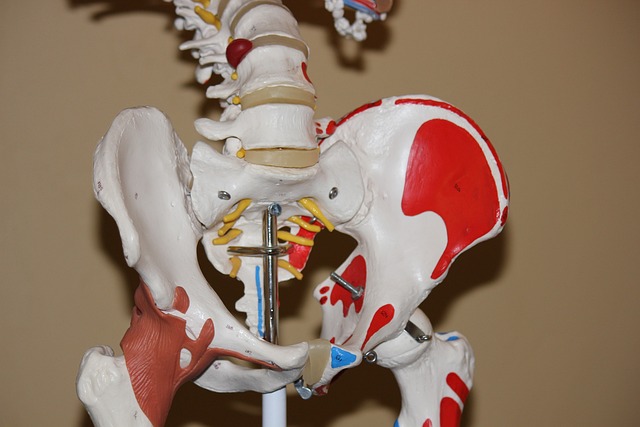The reason sciatica can be such a troublesome problem is the complex and confusing collection of symptoms that can come with this issue. One of such confusing symptoms is when sciatica with groin pain occurs. Groin pain can be directly caused by the sciatica, caused by the same condition as the sciatica or it can also arise as a completely different problem for someone already suffering with sciatica.
In this article, we are going to discuss sciatica with groin pain and explain the causes, symptoms and treatment for this condition. This is a complex topic and we recommend that anyone suffering from sciatica with groin pain should seek individualised medical assessment and treatment.
What is Sciatica?
Sciatica is caused by irritation or compression of the sciatic nerve. Sciatica is not a “condition” in and of itself; rather, it is a set of symptoms that can be caused by many different things.
Some of the common causes of sciatica include:
- Disc injuries (like herniated discs or disc bulges)
- Arthritis in the spine
- Spinal stenosis
- Piriformis syndrome
- Lesions in the spinal canal
- Spondylolisthesis
Considering that this nerve is the largest in the body, compression or irritation to this structure can substantially alter the function and feeling of the connecting areas, which spread widely throughout the leg.

Pain from sciatica often radiates to peripheral areas shown in the image above, inducing pain or distorted signals to the areas supplied with feeling by the sciatic nerve.
Symptoms of sciatica include:
- Pain along the course of the nerve (the location of the pain depends on which nerve root is affected)
- Back pain
- Pins and needles/numbness in the leg or foot
- Weakness in the lower limbs
- Groin pain

Looking more closely at the pelvic area, every yellow root stem in the above picture represents a nerve root. If these yellow nerve roots weren’t trimmed into stumps for the picture, you’d see how the sciatic nerve feeds from the lumbar area (the bottom of the spine) and the sacrum (the back wall for the pelvis) and runs down into your legs.
Some of the upper lumbar nerve roots – namely L1, L2 and L3 – become nerves that run into the groin. If these are affected, nerve pain in the groin can occur.
What Causes Sciatica with Groin Pain?
Injury to one of the spinal structures can compress or irritate the nerve roots in the spine, leading to the radiating pain we discussed earlier.
Direct compression on one of these nerves causes radicular pain, meaning pain caused by a nerve. If the affected nerve is L1, L2 or L3, groin pain will result.
There is also another type of pain, called somatic referred pain, which can cause pain to refer from the back or hip into the groin. This pain is not linked to a specific nerve root and tends to be less sharp and more achy in nature.
It is also possible for a person to have sciatica and another condition that causes their groin pain.
Below are several other causes of groin pain which may exist alongside sciatica:
- Hip arthritis
- Hip labral tear
- Adductor muscle injury
- Inguinal hernia
- Avascular necrosis of the hip
How to Relieve Sciatica with Groin Pain?
The good news is that sciatica usually gets better for most people – although the time it takes for the symptoms to ease depends on the root cause of the problem.
Because the cause of the sciatica and the groin pain dictates the correct treatment plan, it is important to get a formal diagnosis from a healthcare professional who can guide your rehabilitation.
Nevertheless, there are ways to help relieve groin pain from the comfort of your home to help manage your symptoms.
The following suggestions are made for informational purposes only and should not be used in lieu of a proper diagnosis and instructions from a medical provider. Check with your doctor before beginning any new rehabilitation programme for sciatica or groin pain.
Top Tip: Get up and move around as often as possible!
Our bodies were not made to sit, curled into one position for hours on end. Remaining stationary day in and day out can lead to a plethora of problems down the line. If possible, take 5 minutes every hour or so to stretch your legs and restore the range of motion to your body. Even a simple 30 second shake out can help warm up those ever-tightening muscles!
Now, let’s cover 3 of the best stretches for relieving groin pain.
3 of the Best Stretches for Sciatica with Groin Pain
These stretches will NOT be suitable for everyone. Be sure to check with your provider first and do not attempt any stretch that is uncomfortable or puts you at any risk of injury.
#1 The Lying Piriformis Stretch
- Start by lying flat on your back, feet flat on the floor and knees fully bent
- Raise your left ankle and rest it in front of your right bent knee (at the bottom of your right thigh)
- Grip your right thigh and gently pull it towards your chest, getting as close as you can manage (this will bring in both your right thigh and your left leg to your chest)
- Hold the stretch for as long as feels comfortable and this switch legs (place your right ankle on your left thigh)

If you are experiencing groin pain on one side, it is likely you are experiencing an injury or compression localised to that same side. For example, if you are experiencing pain in the left side of your groin it may be that an issue with your left hip is irritating the sciatic nerve and the groin on the left side of your body.
Start by using your affected leg as the first to go on top (meaning you grip and pull your less affected leg). However, for many people, stretching the affected side makes the problem worse. For many people, stretching the less affected side instead can be more beneficial!
Taking the approach of stretching the opposite side can actually help to relieve tension on the pelvis as a whole and help muscle imbalances directly, relieving some of the pressure on the affected muscles. In this way, stretching the opposite side can be an effective treatment for many nerve irritation issues.
#2 Hip Bridge
- Start by lying on your back, feet flat on the floor, knees fully bent and arms by your sides with palms facing down against the floor
- Slowly push your pelvis upwards towards the ceiling
- When you reach the top of this position, your calves should be at a 90-degree angle to the floor
- Gently squeeze your buttocks, but release if this causes you pain
- Hold this for 30 seconds, then release slowly, lowering your buttocks and back to the floor

With any stretch, it’s imperative you take your time moving in, out, and through the motion. This will not only prevent injury but will allow you to identify the limit to your motion without pushing yourself too far.
Performing controlled stretches is necessary to loosen the muscles gently, without yanking them or risking pinching the nerve.
#3 The Hip Flexor Stretch
This is a great stretch if you are experiencing pain more notably in one side of your groin.
- Start by kneeling with the knee of your more painful side on the floor, and your other foot on the floor with your knee bent at a 90-degree angle (see picture below)
- Resting both hands on the knee bent towards the ceiling, slowly lean forward
- This will increase the bend the knee under your hands (the less painful one), and straighten the leg rested on the floor (the more painful one)
- As you edge forward, you will start to feel a tightening in the more painful side of your groin
- Hold this stretch for 30 seconds, then slowly return to your starting kneeling position

Again, if this position hurts too much using the more painful side against the floor, switch legs! This stretch can be equally beneficial using either leg.
This exercise is great for releasing tension in the groin for people who sit for a long period of time. We are restoring the range of motion to the muscles which have grown accustomed to being bunched up when sitting.
What to Avoid with Sciatica with Groin Pain?
I have seen several articles suggesting the use of foam rollers and hip release balls to apply prolonged and deep pressure to the area where you are experiencing pain. However, this is counterproductive. We’re in this position because of the compression and pressure applied to the sciatic nerve. Foam rolling can often only serve to make the problem worse.
What’s more, where the sciatic nerve sits in the buttock is actually quite close to the surface of your skin. If you pummel and roughly massage that area, you risk directly irritating the sciatic nerve even further, leading to worse symptoms than before.
The same is true of aggressive stretching. When you aggressively stretch a painful area, it is possible to increase the compression on the nerve and worsen your symptoms.
Typically, with rest and appropriate stretching, carried out following the proper technique, sciatica with groin pain will eventually resolve as you heal and your sciatica eases.
Summary
So, that was a brief rundown of the causes, symptoms and treatment for sciatica with groin pain. Sciatica with groin pain is complex and should always be assessed by a medical professional as the cause may or may not be linked to the same condition.
I hope this article has been useful. If it has, leave a comment below!

